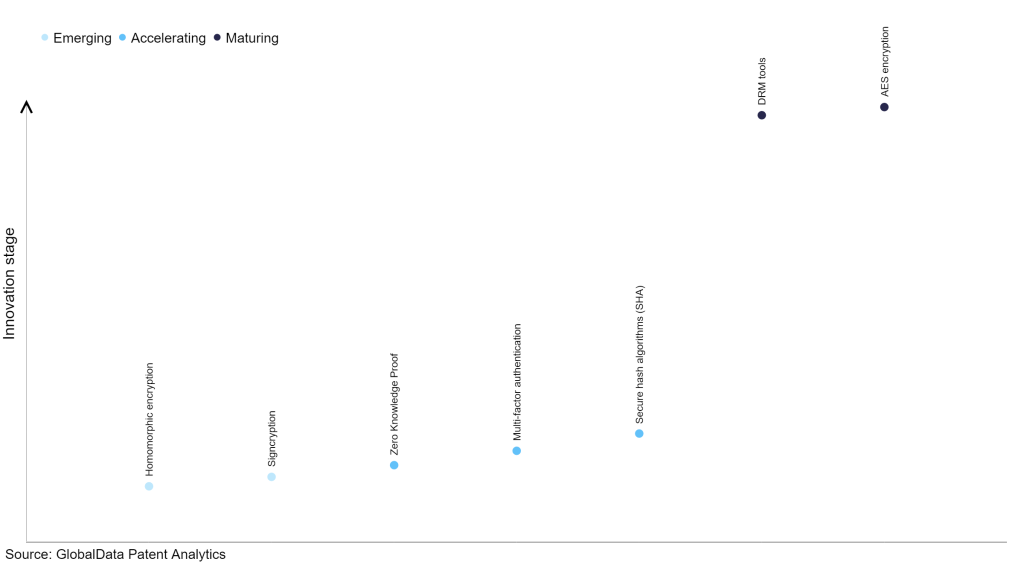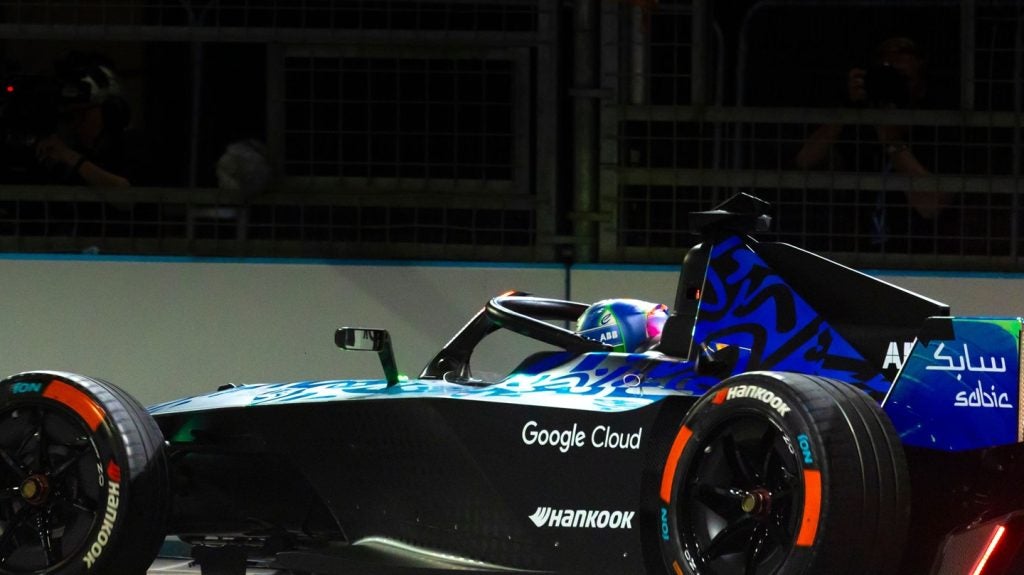The technology industry continues to be a hotbed of patent innovation. Activity is driven by the increasing need for enhanced physical security measures, the rise in smart home and smart office solutions, and the demand for seamless integration with digital systems, as well as growing importance of technologies such as biometric authentication, encryption algorithms, tamper detection mechanisms, and secure communication protocols for robust cybersecurity measures. In the last three years alone, there have been over 1.5 million patents filed and granted in the technology industry, according to GlobalData’s report on Cybersecurity in technology: programmable electronic locks. Buy the report here.
However, not all innovations are equal and nor do they follow a constant upward trend. Instead, their evolution takes the form of an S-shaped curve that reflects their typical lifecycle from early emergence to accelerating adoption, before finally stabilizing and reaching maturity.
Identifying where a particular innovation is on this journey, especially those that are in the emerging and accelerating stages, is essential for understanding their current level of adoption and the likely future trajectory and impact they will have.
185+ innovations will shape the technology industry
According to GlobalData’s Technology Foresights, which plots the S-curve for the technology industry using innovation intensity models built on over 1.6 million patents, there are 185+ innovation areas that will shape the future of the industry.
Within the emerging innovation stage, homomorphic encryption and signcryption, are disruptive technologies that are in the early stages of application and should be tracked closely. Zero knowledge proof, multi-factor authentication and secure hash algorithms (SHA) are some of the accelerating innovation areas, where adoption has been steadily increasing. Among maturing innovation areas are DRM tools and AES encryption, which are now well established in the industry.
Innovation S-curve for cybersecurity in the technology industry

Programmable electronic locks is a key innovation area in cybersecurity
Programmable electronic locks are technologically advanced locks that offer users the ability to set and customise access codes for secure entry. These locks find widespread usage in both commercial and residential environments to bolster security measures.
GlobalData’s analysis also uncovers the companies at the forefront of each innovation area and assesses the potential reach and impact of their patenting activity across different applications and geographies. According to GlobalData, there are 395+ companies, spanning technology vendors, established technology companies, and up-and-coming start-ups engaged in the development and application of programmable electronic locks.
Key players in programmable electronic locks – a disruptive innovation in the technology industry
‘Application diversity’ measures the number of applications identified for each patent. It broadly splits companies into either ‘niche’ or ‘diversified’ innovators.
‘Geographic reach’ refers to the number of countries each patent is registered in. It reflects the breadth of geographic application intended, ranging from ‘global’ to ‘local’.
Patent volumes related to programmable electronic locks
Source: GlobalData Patent Analytics
Toyota Motor is the leading patent filer in programmable electronic locks. The company’s patents are aimed at a server receiving the first identification information unique to a user of a vehicle from a first terminal device and receiving the second identification information unique to a user of a second terminal device from the second terminal device. The second authentication information, which is generated based on the first identification information stored in the first storage unit, is transmitted to the second terminal device.
A vehicle verifies authenticity of the second authentication information acquired from the second terminal device based on the first identification information and the second identification information acquired from the second terminal device, and the first authentication information stored in a second storage unit. A storage is unlocked only when the authenticity is confirmed.
Other prominent patent filers in the space include Assa Abloy and Ford Motor.
By geographic reach, Nuro leads the pack, followed by Level Homes and Cubic. In terms of application diversity, Superpedestrian holds the top position, followed by Toyota Motor and Assa Abloy.
Cybersecurity innovation in programmable electronic locks has revolutionized the way people secure physical assets and spaces. These locks utilize advanced technologies and cryptographic mechanisms to provide secure access control and protection against unauthorized entry.
To further understand how cybersecurity is disrupting the technology industry, access GlobalData’s latest thematic research report on Cybersecurity.
Data Insights
From

The gold standard of business intelligence.
Blending expert knowledge with cutting-edge technology, GlobalData’s unrivalled proprietary data will enable you to decode what’s happening in your market. You can make better informed decisions and gain a future-proof advantage over your competitors.







